Silk for Life
At Arun Yarns, we are dedicated to producing premium-quality Indian Pure Silk Yarn. Our unwavering commitment lies in promoting and preserving the legacy of Indian silk, ensuring excellence in every thread we create.
Customer Satisfaction
At Arun Yarns, customer satisfaction has always been our top priority. Through continuous innovation and refinement, we have enhanced our processes over time to deliver exceptional value through our diverse range of products and services.
Our Products
We offer a diverse range of products tailored to meet the needs of the Silk Industry. Our collection includes Raw Silk, Pure Silk Yarn, Warp, Weft, and Zari. For further details, inquiries, or specific requirements, feel free to contact us.
About us
Since 1989
Arun Yarns specializes in manufacturing 100% Mulberry Pure Silk Yarn. We source high-quality silk from Indian cocoons and process it into both Warp and Weft yarns. Our range includes various deniers of raw silk, including 16-18, 18-20, 19-21, 20-22, 24-26, and 28-30.
In the category of twisted silk yarn, we offer all these deniers in 2-ply, 3-ply, 4-ply, and 5-ply up to 10 ply, available in both hank and cone format.
Additionally, we provide custom dyeing services based on client requirements.
Customer satisfaction is our top priority. Our research team continuously collaborates with clients and analyses market feedback to enhance our product range, ensuring we stay aligned
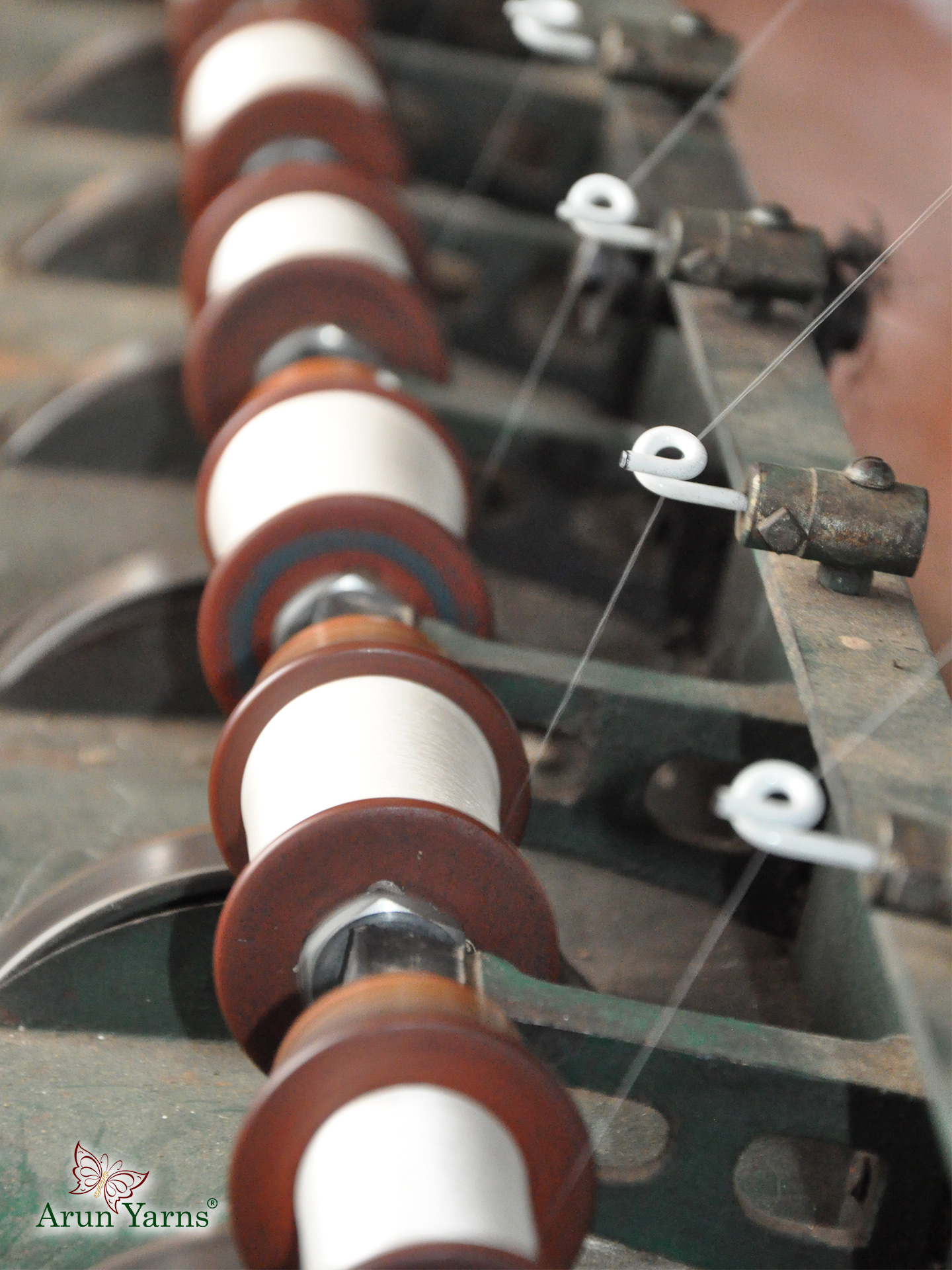
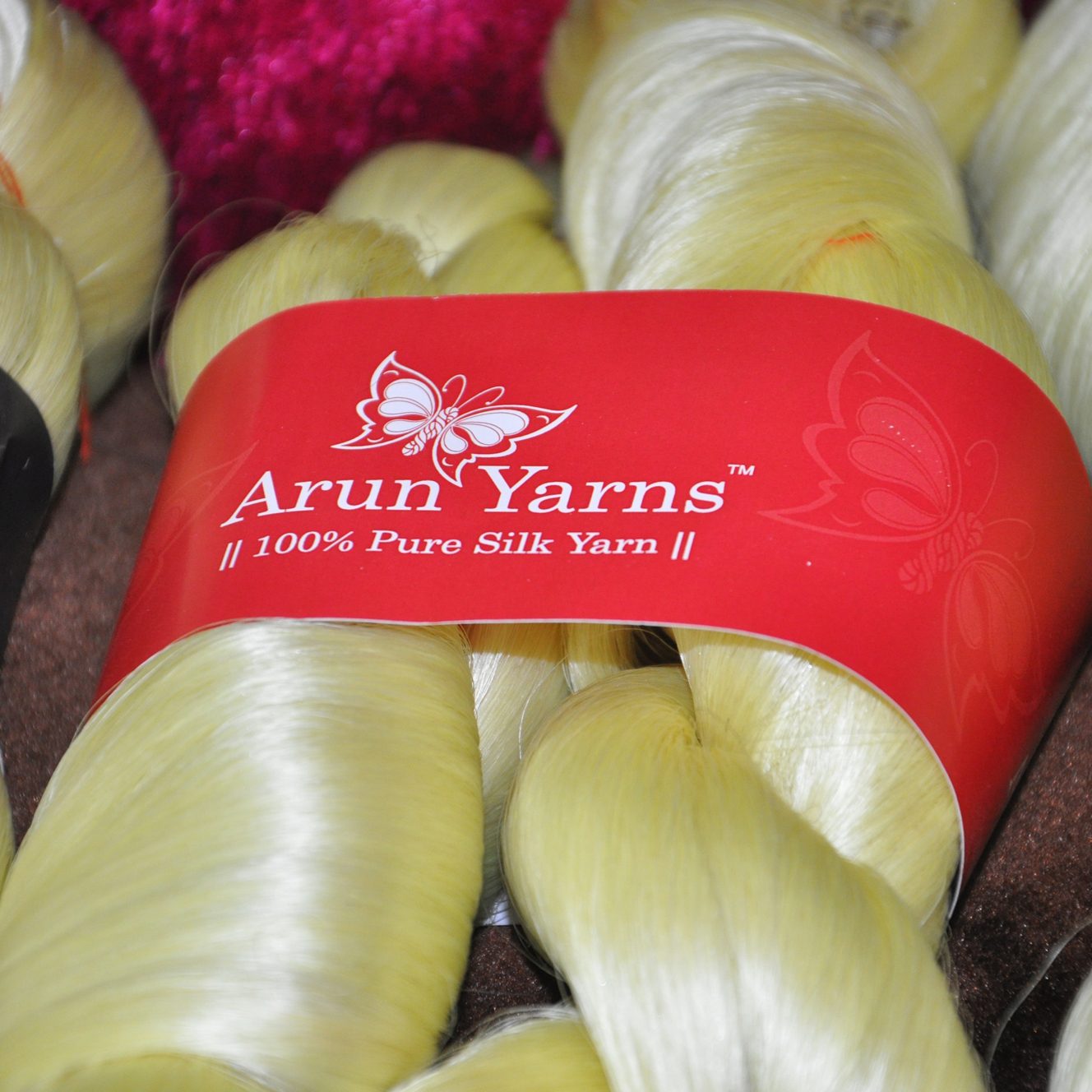
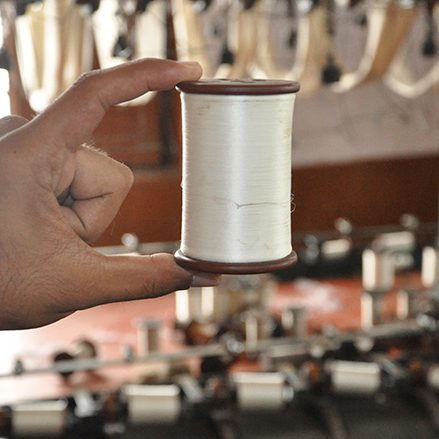
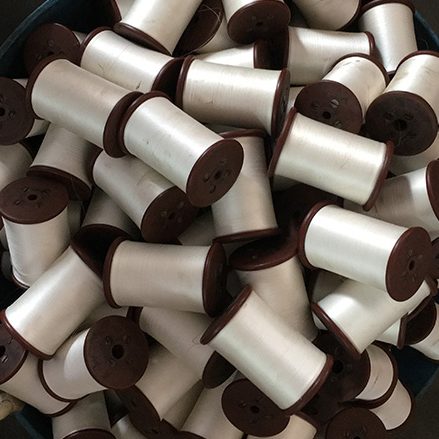
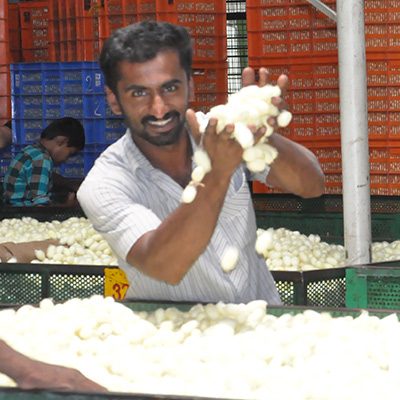
Silk and Its Various Types
Silk: The Queen of Textiles
Silk has long been associated with luxury, elegance, class, and comfort.
A natural protein fibre, silk is composed mainly of fibroin and is produced by certain insect larvae to form cocoons. The most well-known variety comes from the mulberry silkworm, whose shimmering appearance is due to the triangular prism-like structure of silk fibres, which refracts light at different angles, creating a beautiful interplay of colours.
A Historical Perspective
The origins of silk trace back to 3000 BC, when Empress Hsi Ling Shi, wife of Emperor Huang Ti (the Yellow Emperor), is said to have discovered silk accidentally. As the story goes, a silk cocoon fell into her tea, and as it unravelled, she became fascinated with the fine threads. Her curiosity led to the cultivation of silkworms, the invention of the reel and loom, and the development of sericulture.
Originally reserved for Chinese emperors and nobility, silk gradually spread across China and Asia, eventually reaching different parts of the world through trade routes like the Silk Road.
Silk in India
In India, silk is popularly known as Resham in the north and east and Pattu in the south. The country is the second-largest producer of silk after China and the largest consumer globally. Traditional silk sarees hold deep cultural significance, especially in Assam and South India, where they are worn during weddings and auspicious occasions.
Ramanagara, located 50 km from Bangalore, is often referred to as the "Silk City" of India, playing a major role in Karnataka’s silk production. Some of India's most celebrated silk-producing regions include Kanchipuram, Pochampally, Dharmavaram, Mysore, Arani, Banaras, Bhagalpur, and Murshidabad.
Silk finds applications in clothing, home décor, and even medical uses due to its unique properties.
Types of Silk
There are five major types of silk of commercial importance, each obtained from different species of silkworms that feed on various food plants:
- Mulberry Silk – The most widely produced and refined silk, known for its superior quality.
- Oak Tasar & Tropical Tasar Silk – Coarser and less lustrous, often used in furnishings and indigenous textiles.
- Muga Silk – A golden-yellow silk exclusive to Assam, known for its durability and sheen.
- Eri Silk – Also called Endi or Errandi silk, this variety is spun rather than reeled, making it warmer and more absorbent.
All non-mulberry silk varieties are collectively referred to as Vanya Silks in India. The country holds a unique distinction in producing all these commercial varieties of silk, making it a diverse and rich hub for silk craftsmanship.
Next Steps...
Connect with us by clicking on the button.



